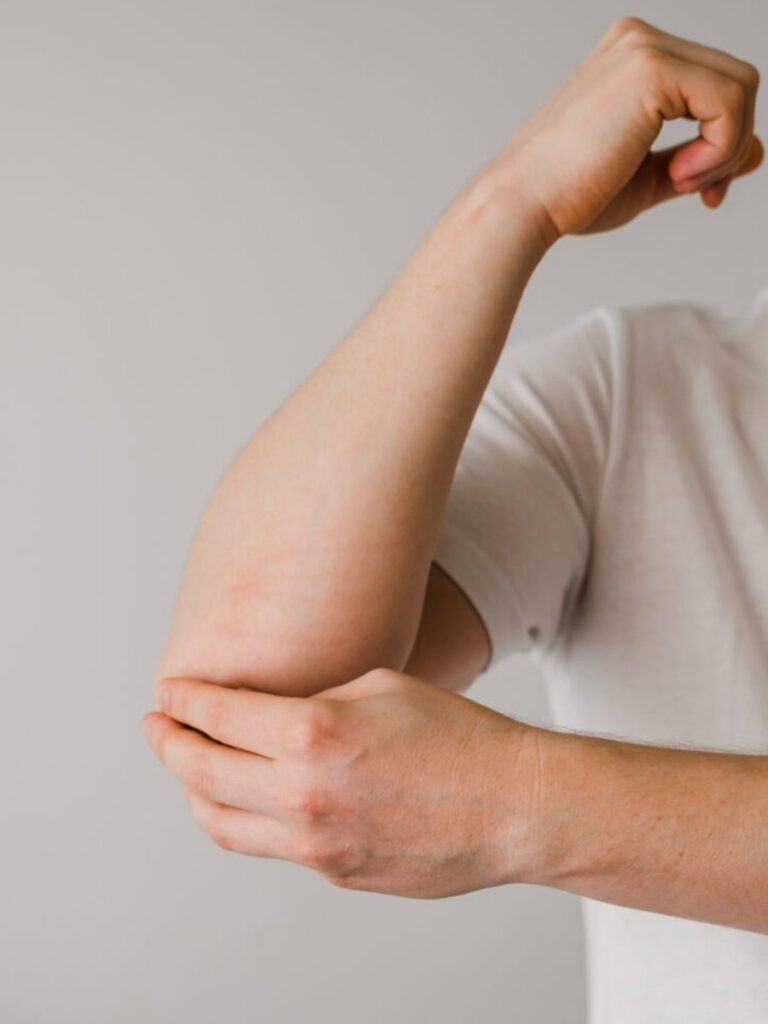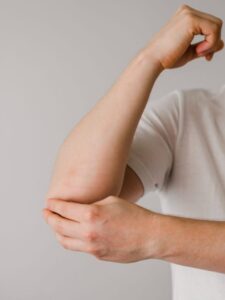All About Golfer’s Elbow: Symptoms, Causes, And How To Treat It?

Overview
Golfer’s Elbow condition, is also called as medial epicondylitis, can come from using tennis rackets, carrying a heavy tray, hammering nails, or typing on a computer.
It is a type of tendonitis that causes pain and swelling in the tendons of your forearm and elbow. When you repeatedly bend, grip, or twist with your wrist and arm, tiny tears form in the tendons, leading to pain in your wrist, elbow, and forearm.
with your wrist and arm, tiny tears form in the tendons, leading to pain in your wrist, elbow, and forearm.
If left untreated, medial epicondylitis/ golfer’s elbow can cause lasting damage, such as limiting the movement of your elbow, causing ongoing pain, and weakening your grip.
What is Golfer’s Elbow?
Golfer’s elbow is a type of tendonitis that causes pain in the tendons linking your forearm to your elbow. The pain is focused on the bony bump inside your elbow and can spread into your forearm. It often improves with rest.
What’s the difference between tennis elbow and golfer’s elbow?
Both conditions are caused by repeatedly using your wrist and arm, not just by playing sports. The difference is that the Tennis Elbow impacts the tendon on the outer side of your elbow, while golfer’s elbow affects the tendon on the inner side. Golfer’s elbow is also less common.
Symptoms & Causes
Symptoms
It includes these symptoms:
- Pain and tenderness: Usually felt on the inner side of your elbow, sometimes extending to the inner forearm, and often worse with certain movements.
- Stiffness: Your elbow may feel stiff, and making a fist might be painful.
- Weakness: You may feel weakness in your hands and wrists.
- Numbness or tingling: These sensations might spread to one or more fingers, usually the ring and little fingers.
The pain can start suddenly or develop gradually and gets worse with movements like swinging a golf club.
Causes of Golfer’s Elbow
Medial epicondylitis occurs from using too much force to bend the wrist towards the palm. This can happen with actions like swinging a golf club or pitching a baseball. Other causes include:
- Serving forcefully in tennis or using a spin serve
- Weak shoulder and wrist muscles
- Using a tennis racket that is too tightly strung, too short, or too heavy
- Throwing a javelin
- Carrying a heavy suitcase
- Chopping wood with an ax
- Operating a chain saw
- Frequent and continuous use of other hand tools
Diagnosis & Tests
How is it diagnosed?
Your healthcare provider will ask about activities that cause your elbow pain and will check your arm for movements that trigger the pain. Other tests might include:
- MRI (Magnetic Resonance Imaging)
- Ultrasound
- CT (Computed Tomography) scans
- Bone scans
Prevention
Steps to Prevent it :
- Strengthen your forearm muscles by using light weights or squeezing a tennis ball. Simple exercises can help your muscles handle sudden stress better.
- Stretch before your activity- Warm up by walking or jogging for a few minutes, then do gentle stretches before starting your game.
- Improve your form- Ask an instructor to check your technique to avoid putting too much strain on your muscles.
- Use the right equipment. Upgrade to lighter graphite golf clubs if yours are old, and make sure your tennis racket fits you well. A racket with a small grip or heavy head can increase elbow problems.
- Lift properly- When lifting anything, including weights, keep your wrist firm and stable to reduce strain on your elbow.
- Take breaks- Don’t overuse your elbow. If you feel pain, rest your elbow.
Are there specific risk factors for golfer’s elbow?
Yes, the risk of developing golfer’s elbow can increase if you:
- Spend two hours a day doing repetitive actions
- Smoke
- Have obesity
Living With Golfer’s Elbow
How to take care of it?
First, give your sore arm some rest. Once you’re ready to get back to sports or work, follow these steps:
- Consult your healthcare provider about wrist and arm stretches to do before activities that strain your wrist and arm.
- Wear a brace during work or sports.
- Ice your arm after working or playing sports.
A note from Dr Preetesh Choudhary
Dr Preetesh Choudhary says, “Golfer’s elbow can do more than just keep you from playing sports or working. If not treated, it can cause lasting problems like reducing your elbow’s movement, causing long-term pain, and weakening your grip. If you have ongoing elbow pain, talk to your healthcare provider. They can help relieve the pain and suggest ways to care for your elbow so you don’t have to stop doing what you love”.






